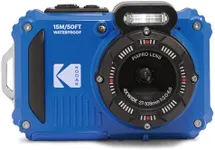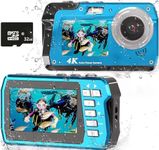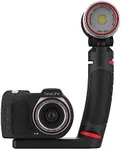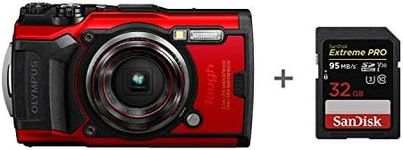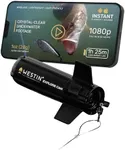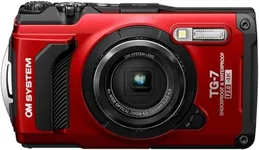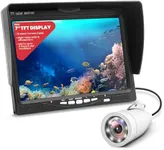Buying Guide for the Best Underwater Digital Cameras
Choosing the right underwater digital camera can be a thrilling yet challenging task. The key is to understand your needs and match them with the camera's specifications. Whether you're a professional diver, a snorkeling enthusiast, or someone who loves capturing underwater moments during vacations, knowing what to look for in an underwater digital camera will help you make the best choice. Here are the key specifications to consider and how to navigate them.Waterproof Depth RatingThe waterproof depth rating indicates how deep you can take the camera underwater without it getting damaged. This is crucial because exceeding the depth rating can result in water damage. Cameras typically range from 10 meters (suitable for snorkeling) to 30 meters or more (ideal for scuba diving). Choose a depth rating based on your diving habits; casual snorkelers can opt for lower ratings, while serious divers should look for higher ratings.
Image Quality (Megapixels and Sensor Size)Image quality is determined by the camera's megapixels and sensor size. Higher megapixels mean more detail, while a larger sensor can capture more light, improving image quality in low-light conditions. For underwater photography, where lighting can be challenging, a camera with at least 12 megapixels and a larger sensor is recommended. If you prioritize high-quality images, look for cameras with higher megapixels and larger sensors.
Lens and Zoom CapabilityThe lens and zoom capability affect how close you can get to your subject and the clarity of the images. Optical zoom is more important than digital zoom because it maintains image quality. Underwater, you might need to get close to marine life, so a camera with a good optical zoom (at least 3x) is beneficial. Consider your typical shooting distance and choose a camera with a lens and zoom that meet those needs.
Durability and Build QualityDurability and build quality ensure that the camera can withstand the harsh underwater environment. Look for cameras that are not only waterproof but also shockproof, freeze-proof, and dustproof. This is especially important if you plan to use the camera in rugged conditions. Assess your usage scenarios and pick a camera that offers the necessary durability features.
Battery LifeBattery life determines how long you can use the camera before needing to recharge. Underwater photography can be power-intensive, especially if you're using features like flash or video recording. Look for cameras with long battery life, ideally over 200 shots per charge. If you plan on long diving sessions, consider carrying extra batteries or choosing a camera with excellent battery performance.
Video Recording CapabilityVideo recording capability is important if you want to capture underwater videos. Look for cameras that offer at least Full HD (1080p) resolution, though 4K is preferable for higher quality. Consider the frame rate as well; higher frame rates (60fps or more) result in smoother videos. If video recording is a priority, choose a camera with high-resolution video and good frame rates.
Ease of UseEase of use refers to how user-friendly the camera is, including its controls, menu navigation, and setup. Underwater, you need a camera that is easy to operate, even with gloves on. Look for cameras with intuitive controls, large buttons, and clear menus. If you're a beginner, prioritize ease of use to ensure a smooth and enjoyable photography experience.
Additional FeaturesAdditional features like Wi-Fi connectivity, GPS, and image stabilization can enhance your underwater photography experience. Wi-Fi allows for easy sharing and transferring of photos, GPS can tag your photos with location data, and image stabilization helps reduce blur. Consider which additional features are important to you and choose a camera that offers them.
